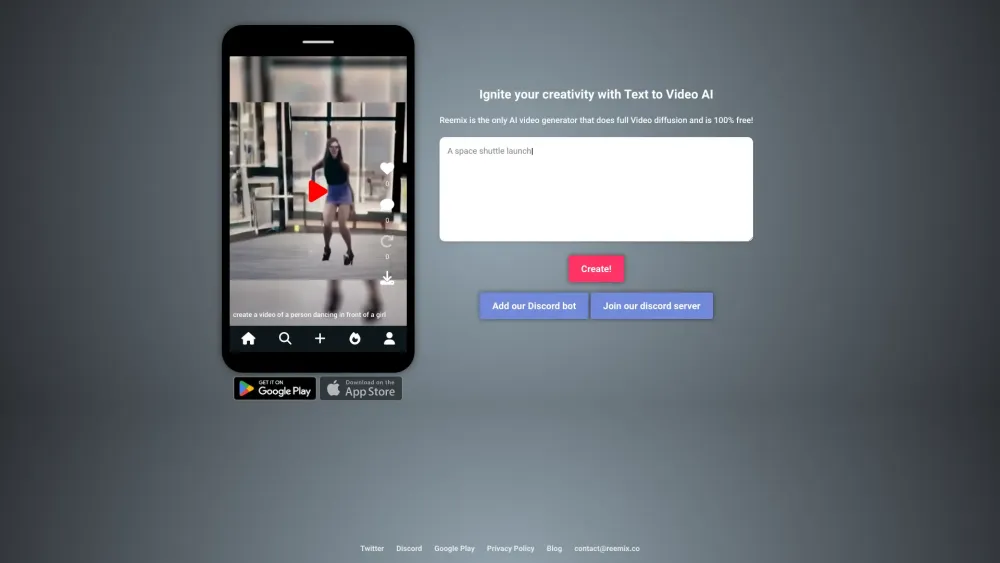










Introduction
In the rapidly evolving world of digital technology, artificial intelligence (AI) has revolutionized various sectors, including content creation. One such innovation is AI-powered text-to-video applications that have transformed how we create and consume video content. These apps use advanced algorithms to convert written scripts into professional-quality videos, streamlining the production process and making it accessible to a broader audience. This article provides an in-depth exploration of these innovative tools, their features, benefits, limitations, and future prospects.
What are AI-Powered Text-to-Video Applications?
AI-driven text-to-video platforms employ machine learning models to automatically generate videos from textual input. Users simply need to enter the script or provide a summary of what they want to convey, and the software does the rest – creating visuals, adding voiceovers, music, transitions, and even animations to produce a coherent and engaging video. Some popular examples include Synthesia, Wibbitz, and Vyond Studio.
How Do They Work?
The working mechanism of AI-powered text-to-video apps involves several steps:
1. Text Processing: The app analyzes the provided text for key information such as topics, themes, and potential visual elements.
2. Content Creation: Using natural language processing (NLP) and computer vision techniques, the platform selects relevant images, graphics, or stock footage based on the context of the text.
3. Voice Generation: Advanced speech synthesis technologies synthesize human-like voices to narrate the script. These can be further customized with different accents, genders, and tones.
4. Editing and Personalization: AI algorithms intelligently edit the video by adding effects, trimming clips, and ensuring smooth transitions between scenes. Users may also personalize certain aspects like branding elements or soundtracks within the application interface.
5. Output Delivery: Once the video is generated, users can download it directly onto their devices or share it across various social media platforms seamlessly.
Benefits of AI-Powered Text-to-Video Tools
Efficiency: Producing high-quality videos becomes faster and more cost-effective compared to traditional methods where each element must be manually crafted.
Accessibility: Even those without technical expertise or expensive equipment can now create compelling visual content.
Scalability: Businesses and organizations can scale up their video marketing efforts quickly and easily.
Personalization: Tailored messaging and localization become simpler with automated translation services integrated into some platforms.
Analytics: Many apps offer analytics capabilities that help track performance metrics and optimize future content strategies accordingly.
Challenges and Limitations
Despite their advantages, AI-powered text-to-video generators face challenges related to:
Artificial Feel: While the output quality improves over time, current versions still struggle to match the authenticity of human-created productions fully.
Creative Constraints: The flexibility offered by manual editing might be limited due to algorithmic decisions made during automation processes.
Legal Considerations: There’s a risk of copyright infringement when using stock assets or synthetic voices without proper licensing agreements in place.
User Control vs Automation: Finding the right balance between user customization options and allowing AI systems enough autonomy remains a challenge for developers.
Future Outlook and Trends
As AI continues to advance at an unprecedented pace, so too will the capabilities of text-to-video applications. We can expect:
Improved Quality: With ongoing research and development, outputs should become increasingly realistic and emotionally resonant.
Greater Customizability: Users will likely see expanded control over every aspect of the final product—from scripting through post-production tweaking.
Integration with Other Technologies: AI-generated videos could integrate live action footage seamlessly or incorporate interactive elements powered by virtual reality/augmented reality tech.
Ethical Implications: As these tools become mainstream, ethical considerations regarding data privacy concerns surrounding synthesized media usage will take center stage among policymakers worldwide.
Industry Adaptation: Industries ranging from education to entertainment will adapt these technologies creatively leading towards democratization of storytelling via video mediums globally.
Conclusion
AI-powered text-to-video solutions represent a significant leap forward in content creation efficiency while opening new avenues for creativity and engagement across diverse audiences online today – tomorrow holds even greater promise!
